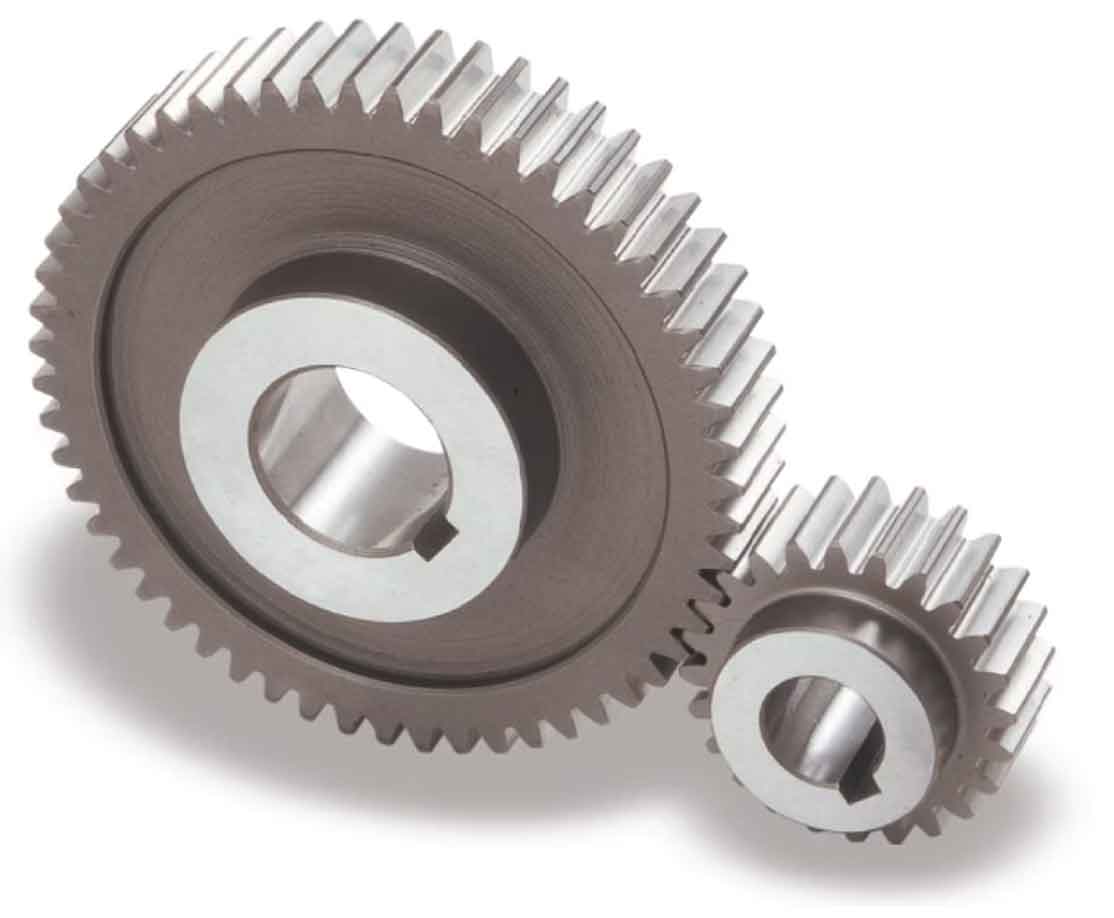
Spur gears are one of the most common types of gears used in mechanical engineering. They have a simple yet effective design, making them popular in various industrial applications. Here are the fundamental concepts of spur gears in mechanical engineering:
1. Gear Terminology:
- Pitch Circle: The theoretical circle on which the gear teeth are located.
- Pitch Diameter: The diameter of the pitch circle.
- Addendum: The distance from the pitch circle to the top of the gear tooth.
- Dedendum: The distance from the pitch circle to the bottom of the gear tooth.
- Circular Pitch: The distance from one tooth to the corresponding tooth on the adjacent gear, measured along the pitch circle.
- Diametral Pitch: The number of teeth per inch of the pitch diameter.
2. Gear Ratio: Spur gears transmit motion and power between two parallel shafts. The gear ratio is the ratio of the number of teeth on the driving gear (pinion) to the number of teeth on the driven gear (gear).
3. Meshing of Gears: The teeth of two meshing spur gears make contact along a single line of action. This line of contact is called the pitch line. The meshing of the gears allows the transfer of power from one gear to another.
4. Velocity Ratio and Speed: The gear ratio determines the velocity ratio between the driving and driven gears. The speed of the driven gear is inversely proportional to the number of teeth on the driven gear relative to the driving gear.
5. Direction of Rotation: Spur gears have a fixed axis of rotation and transmit motion in the same plane as their axes. The direction of rotation of the driven gear is opposite to that of the driving gear.
6. Efficiency: Spur gears have high efficiency due to their straight teeth and parallel shafts. They efficiently transfer power without introducing axial or thrust loads.
7. Load Distribution: The load is distributed uniformly across the gear teeth, providing a smooth and even transfer of power.
8. Backlash: Backlash is the small clearance between the teeth of meshing gears. It is necessary to prevent interference and ensure smooth motion.
9. Lubrication: Proper lubrication is essential to reduce friction and wear between the gear teeth during operation, ensuring longer service life and optimal performance.
10. Noise and Vibration: Spur gears can produce noise and vibration, especially at high speeds. To reduce noise, designers may employ various techniques, such as modifying tooth profiles or using helical gears.
Spur gears are commonly used in applications where the direction of rotation and speed ratio are straightforward and where precision and efficiency are critical. They are found in gearboxes, clocks, machine tools, conveyor systems, and various other mechanical systems. When designing or selecting spur gears, engineers carefully consider factors like load, speed, torque, and the required level of precision to ensure optimal performance and reliability in the specific application.
